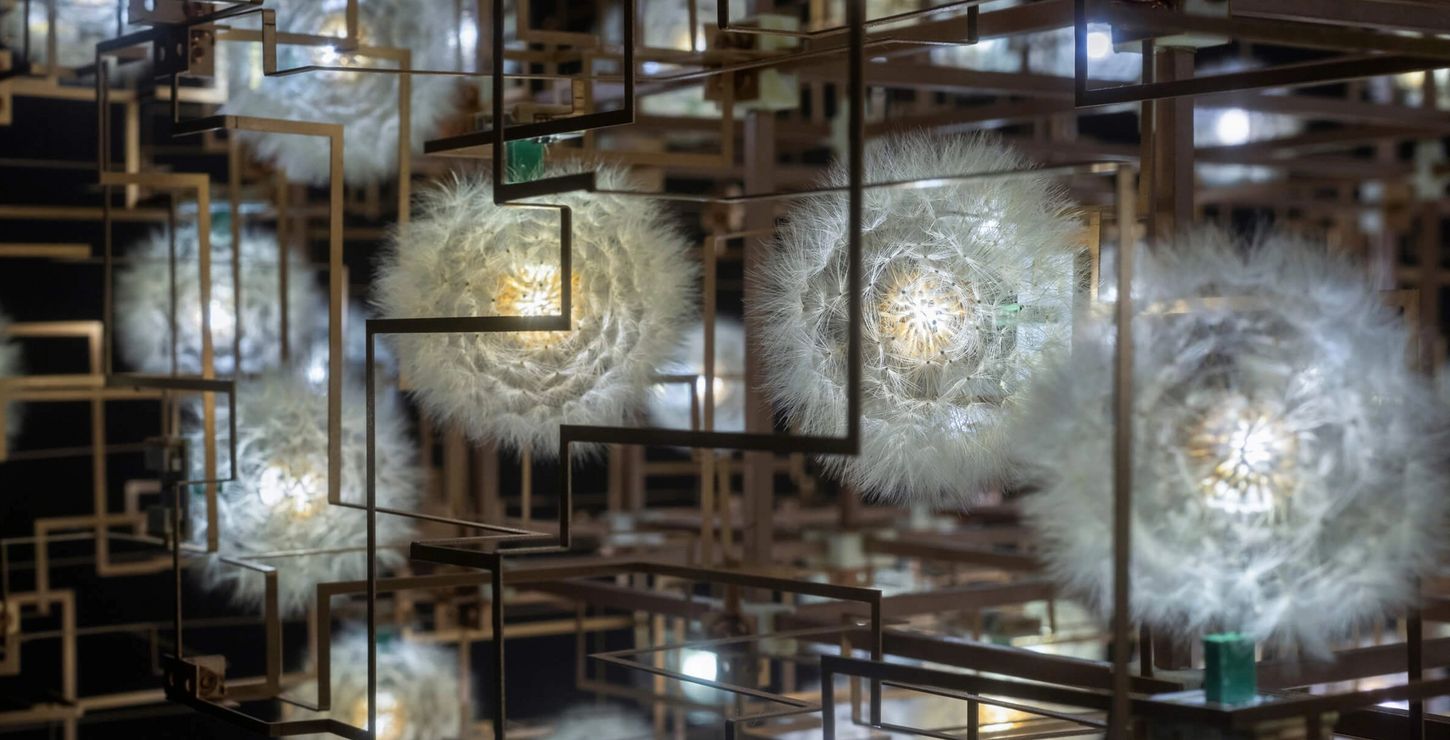Collab Gallery 219
Main Building

Fragile Future (detail), 2007, by DRIFT, Amsterdam. Photo by Henning Rogge. Courtesy of DRIFT.
The Amsterdam-based studio DRIFT creates sculptures, environments, and performances that offer striking commentaries and speculative imaginings about humanity’s relationships with nature and technology. Co-founded by Lonneke Gordijn and Ralph Nauta in 2007, the multidisciplinary studio has grown into a team of more than sixty members whose work freely bridges the categories of art and design.
The centerpiece of the exhibition is a site-specific installation of Fragile Future, one of the studio’s most influential works. LEDs covered in dandelion seeds—painstakingly hand-glued to mimic the natural shape of the flowerheads—are caught within a web of delicate bronze circuitry. While the modular circuits allude to our technology-driven present, the organic elements propose a precarious reconciliation between the natural and human-made worlds. The exhibition also explores how the studio’s artworks come to life. Drawings, models, prototypes, and other documents of the studio’s experiments offer glimpses of the research and engineering that lie behind the apparent effortlessness of DRIFT’s experiential creations.
Presenting an engaging cross-section of DRIFT’s creative practice, this exhibition coincides with the 2022 Design Excellence Award issued by Collab, the museum’s support group for modern and contemporary design.
Collab Gallery 219
Main Building
Dutch artists Lonneke Gordijn (born 1980) and Ralph Nauta (born 1978) founded DRIFT in 2007. With a multidisciplinary team of 64, they work on experiential sculptures, installations, and performances. DRIFT has realized numerous exhibitions and public projects around the world. Their work has been exhibited at The Shed NYC (2021), Stedelijk Museum (2018), Art Basel (2017, 2021), Victoria & Albert Museum (2009, 2015), UTA Artist Space (2019), Garage Museum (2019), Mint Museum (2019), Biennale di Venezia (2015), Pace Gallery (2017), and Burning Man (2018, 2021), among others. Their work is held in the permanent collections of the Los Angeles County Museum of Art, Rijksmuseum, San Francisco Museum of Modern Art, Stedelijk Museum, Rockefeller Center, Dallas Museum of Art, and the Victoria & Albert Museum. DRIFT was awarded Dezeen designer of the year (2019) and the Arte Laguna Prize, Venice (2014).

Lonneke Gordijn and Ralph Nauta. Photo by Teska Overbeek. Courtesy of DRIFT.
Rhythms of Nature: The Art and Design of DRIFT, the 2022 Collab Design Excellence Award exhibition, is made possible by The Lisa S. Roberts and David W. Seltzer Endowment Fund in Support of the Collab Design Excellence Award Exhibition. Additional support provided by Collab.
The Collab Design Excellence Award 2022 was sponsored by

Additional support provided by Roche Bobois North East, Haworth, Millésimé, Marguerite Rodgers Interior Design, and Eileen and Tony Tognini.
Colin Fanning, Assistant Curator of European Decorative Arts
Check out the variety of events offered by this program, for members and the public alike.